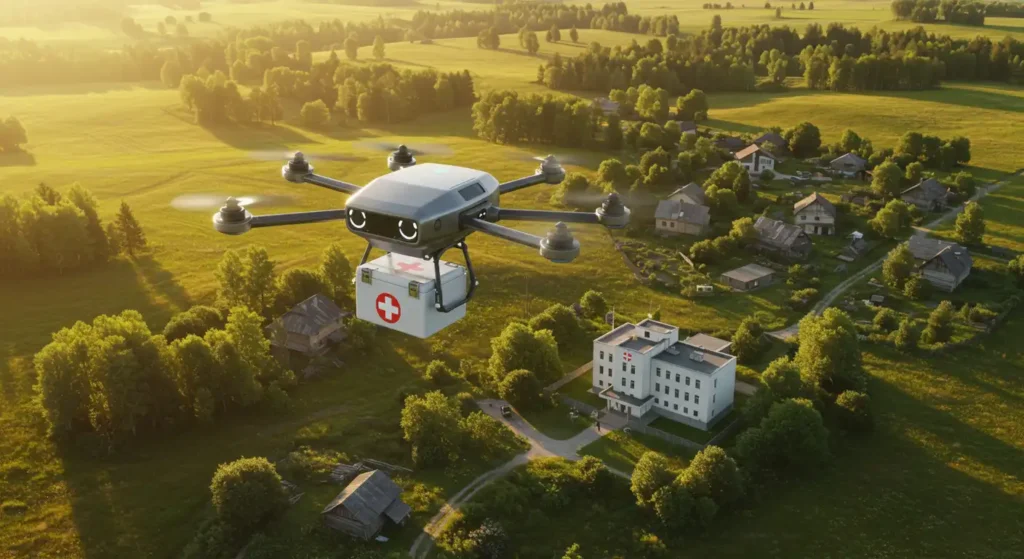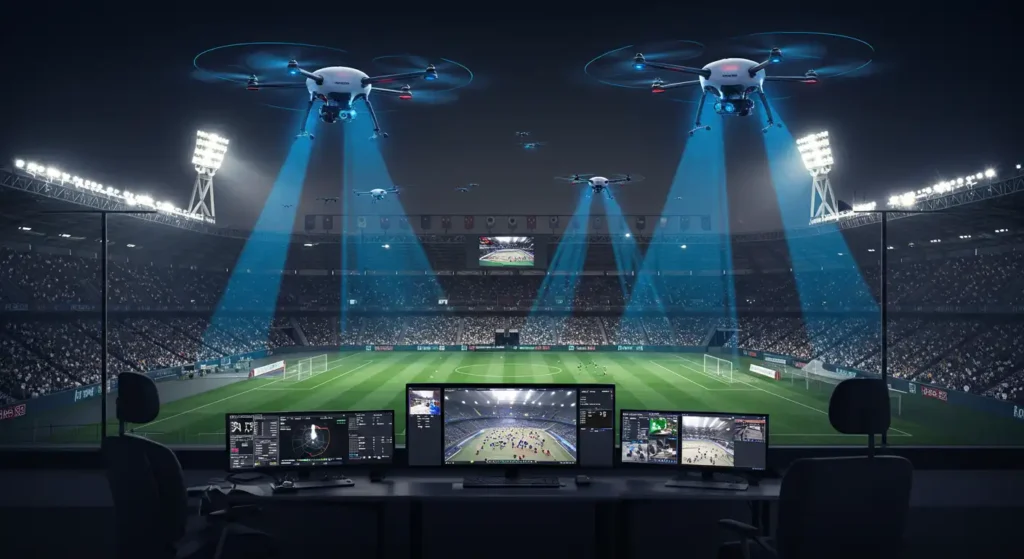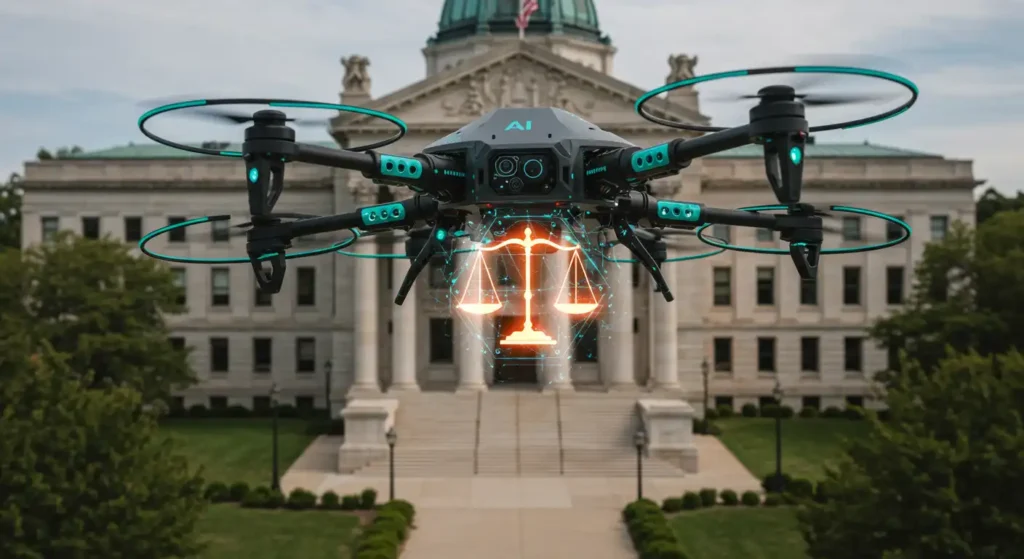How Artificial Intelligence Drones Are Revolutionizing Delivery and Security
Artificial intelligence drones are no longer confined to military use or science-fiction films; they are now at the center of some of the most transformative innovations in delivery and security systems. By merging advanced AI algorithms with drone hardware, industries are pushing logistics efficiency to new levels and revolutionizing surveillance strategies.
In the realm of delivery, companies are leveraging artificial intelligence drones to optimize last-mile logistics, reduce carbon emissions, and accelerate service speeds. In the field of security, AI drones are emerging as mobile drone surveillance systems capable of analyzing behavior, identifying threats, and complementing security surveillance cameras with dynamic coverage.
This article explores in depth how artificial intelligence drones are reshaping both delivery tech and security infrastructures, the challenges that accompany their adoption, and the ethical implications of their widespread use.
The Rise of Artificial Intelligence Drones in Delivery Tech

The global delivery industry is undergoing a massive transformation, and at the heart of it are artificial intelligence drones. These machines are no longer experimental they are operational in multiple regions, from metropolitan areas to remote villages. By combining AI with autonomous navigation, drones can make faster, smarter, and safer deliveries than ever before.
How Artificial Intelligence Drones Enhance Deliveries
Artificial intelligence enables drones to “think” in real-time. While traditional drones operate based on pre-programmed coordinates, AI drones analyze traffic, weather conditions, restricted airspaces, and obstacles dynamically. Using computer vision and machine learning, these drones adapt flight paths mid-journey, guaranteeing successful deliveries even in unpredictable environments.
For example:
- Computer Vision: Recognizes landing zones and avoids obstacles like trees, birds, or power lines.
- Predictive Algorithms: Forecast weather changes and adjust routes accordingly.
- Data Optimization: AI drones process vast amounts of geographic and air traffic data to select the most efficient path.
These capabilities not only improve reliability but also help companies reduce costs by minimizing wasted fuel and downtime.
Benefits for E-Commerce and Healthcare
E-commerce giants like Amazon are already testing drone fleets to handle small package deliveries. Their Prime Air project aims to reduce delivery times to under 30 minutes, revolutionizing customer expectations.
Healthcare is another sector reaping enormous benefits. In Rwanda and Ghana, Zipline uses AI drones to deliver blood supplies, vaccines, and life-saving medications to remote hospitals. This eliminates logistical bottlenecks, ensuring medical products reach patients in time.
“Drones are proving to be a game changer in last-mile logistics, particularly in regions where infrastructure is lacking.” – World Economic Forum
Environmental Sustainability
Artificial intelligence drones are inherently greener than traditional delivery trucks. By cutting road congestion and choosing energy-efficient flight paths, drones reduce greenhouse gas emissions. For example, a single drone delivery emits significantly less CO₂ compared to a diesel-powered van traveling the same route.
This aligns with global sustainability goals, making AI drones a cornerstone of eco-friendly logistics.
Challenges Facing Delivery Tech
Despite their promise, integrating AI-powered drones into delivery systems faces hurdles:
- Regulatory Barriers: Governments impose strict limits on autonomous flights.
- Public Acceptance: Many communities worry about noise pollution and safety risks.
- Infrastructure: Cities need designated drone air corridors, landing pads, and charging hubs.
Future Outlook
The future of delivery tech will likely feature hybrid fleets where drones complement ground vehicles. AI advancements such as swarm intelligence where multiple drones coordinate like bees in a hive could make large-scale deliveries even more efficient.
Artificial Intelligence Drones in Drone Surveillance and Security Systems

Security is one of the most compelling areas where artificial intelligence drones are being deployed. Traditional security surveillance cameras provide valuable monitoring, but they are limited by fixed positions. AI drones, however, offer mobility, adaptability, and intelligent analysis, creating a new generation of drone security systems.
From Passive Surveillance to Proactive Monitoring
Conventional cameras merely record. AI-powered drones, in contrast, analyze live footage, detect anomalies, and even predict potential risks. Equipped with thermal imaging, motion detection, and facial recognition, drones can differentiate between ordinary activity and suspicious behavior.
For example, a drone patrolling a parking lot can detect unauthorized vehicles, follow them discreetly, and notify security teams in real-time.
Integration with Security Surveillance Cameras
The true strength lies in combining stationary surveillance cameras with AI drones. Cameras handle continuous fixed monitoring, while drones dynamically patrol blind spots, high-risk zones, and large areas. Together, they create a multi-layered defense system that is far more effective than either technology alone.
Applications of Artificial Intelligence Drones Surveillance
- Event Security: At large gatherings, drones scan crowds to detect unusual movement or potential threats.
- Corporate Campuses: Businesses use drones for perimeter patrols, particularly during off-hours.
- Border Control: AI drones cover vast, hard-to-reach landscapes where ground patrols are limited.
- Disaster Response: After earthquakes or floods, drones assist in locating survivors and monitoring risks.
Ethical and Privacy Concerns
However, the deployment of AI drones in surveillance raises serious ethical debates. Privacy advocates argue that widespread use of AI-powered surveillance drones could lead to intrusive monitoring of citizens. As a result, governments and corporations must implement strict data regulations and transparency measures to prevent misuse.
Future of Drone Security Systems
Looking ahead, drone security systems will likely integrate more advanced AI features:
- Predictive Security: Anticipating crimes before they happen.
- Autonomous Intervention: Drones deterring intruders with alarms or lights.
- Smart Networks: Seamless integration between drones, fixed cameras, and human operators.
Challenges and Ethical Considerations of Artificial Intelligence Drones

While artificial intelligence drones promise efficiency, they also bring legal, ethical, and social challenges.
Safety Regulations
The Federal Aviation Administration (FAA) in the U.S. and similar agencies worldwide impose strict rules on commercial drone use. Issues like collision risks, airspace congestion, and flight restrictions in urban zones must be addressed before drones can scale widely.
Data Privacy Risks
AI drones are equipped with facial recognition and behavioral analytics. Although useful for identifying criminals, these features raise concerns about mass surveillance. Citizens may feel their privacy is compromised if drones continuously monitor public spaces.
Ethical Use of AI
The ethical dimension of AI drones involves accountability. If a drone misidentifies a target, who is responsible the developer, operator, or AI system itself? Addressing bias in algorithms is crucial to avoid unfair targeting of certain groups.
Conclusion
Artificial intelligence drones are changing the way society thinks about delivery tech and drone security systems. From delivering critical medical supplies to enhancing security surveillance cameras with dynamic coverage, these machines represent the future of logistics and safety.
Yet, with great innovation comes responsibility. Governments, businesses, and developers must strike a balance between maximizing benefits and safeguarding privacy and ethics.



